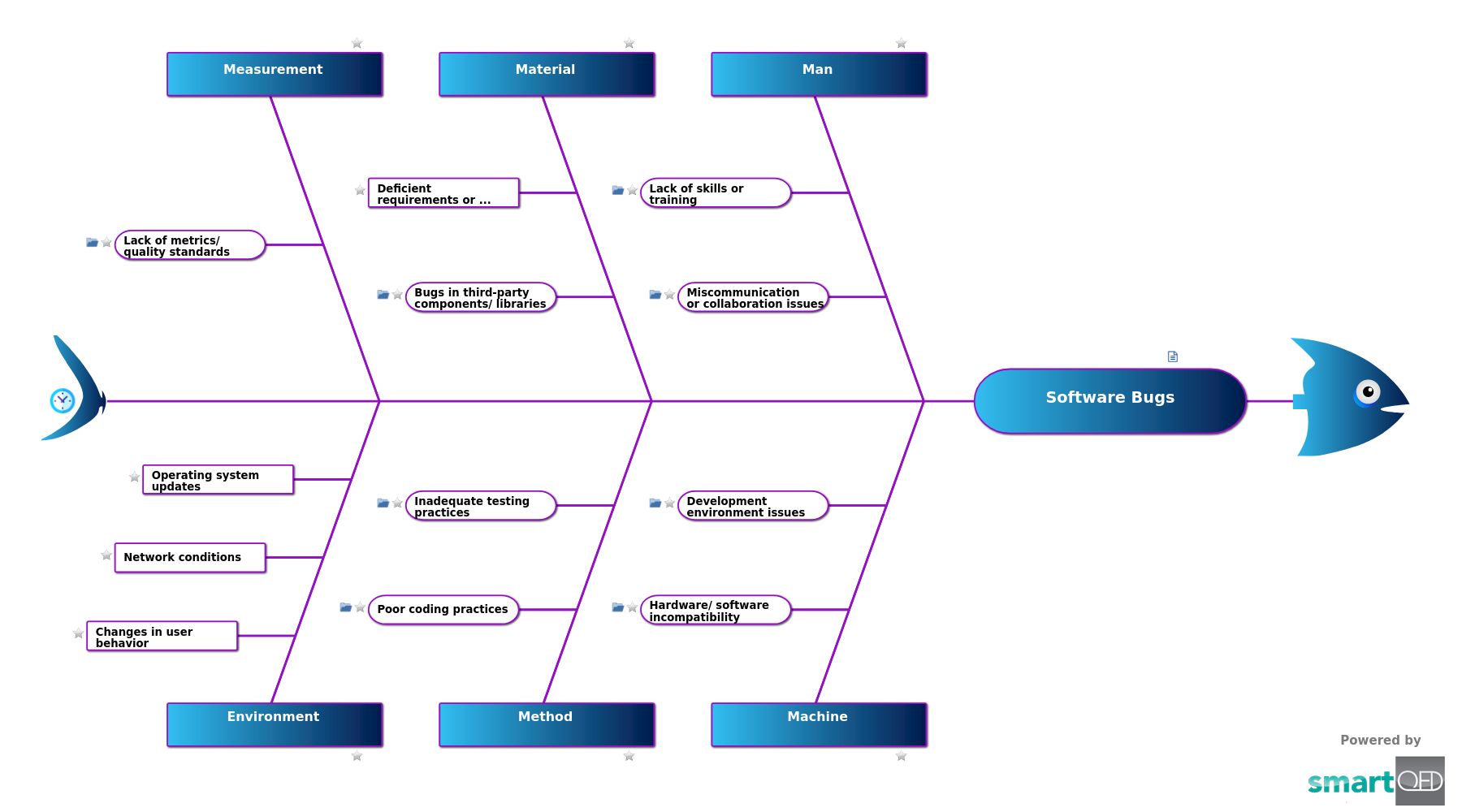Reasons for errors or defects in software

Software bugs or defects are anomalies, flaws, or errors in a computer program code. These bugs cause it to behave in an undesirable way. These bugs arise in various forms, from minor glitches to critical system failures. They can impact software functionality, performance, and reliability. Common types of software bugs include syntax errors, runtime errors, logic errors, memory leaks, concurrent issues and security vulnerabilities. Detecting and fixing software bugs is crucial to the software development lifecycle. The 5 M 1E analyses the causes of software errors and helps identify various contributing factors. We need to empower an organization with reliability and security. By tackling the underlying causes and taking proactive measures, we can avoid the occurrence of software bugs. As a result, it will improve the performance of software applications, providing users with an enhanced experience.
Software Bug
Man
Machine
Material
Method
Measurement
Environment
Root Cause Analysis (RCA) is a valuable tool in problem-solving and quality improvement across various industries for several reasons. RCA helps organizations move beyond addressing symptoms to identifying and addressing the potential causes of problems.
Curated from community experience and public sources: